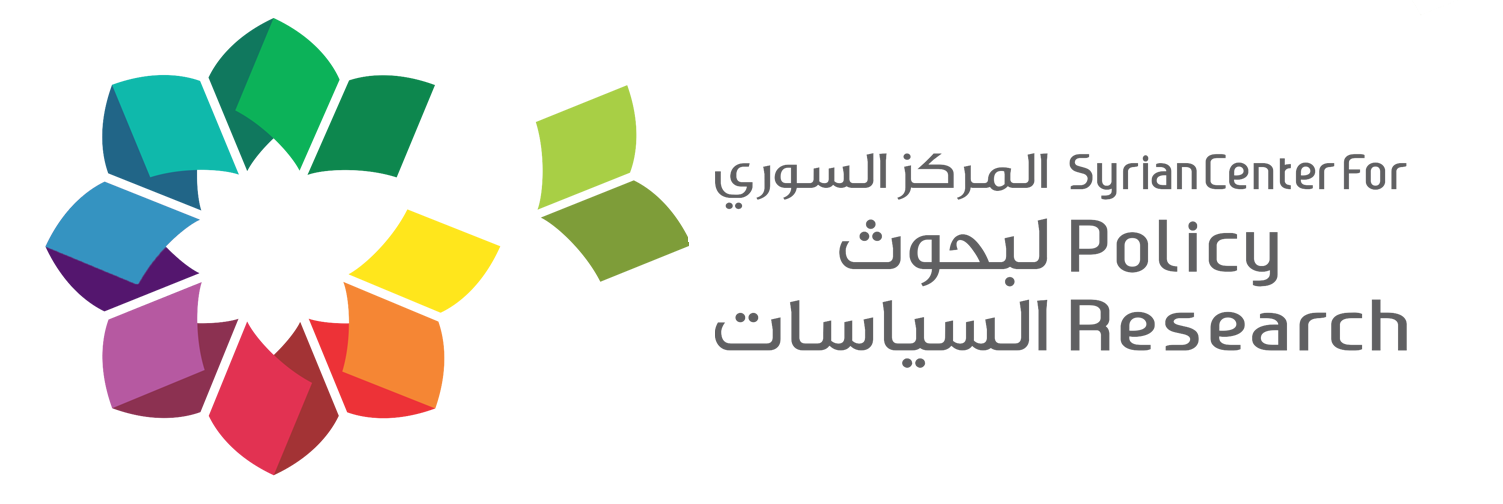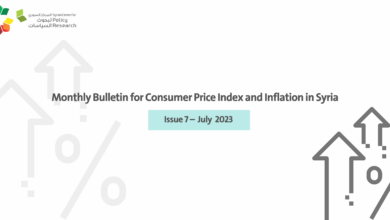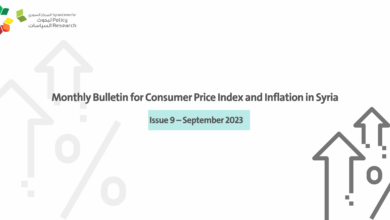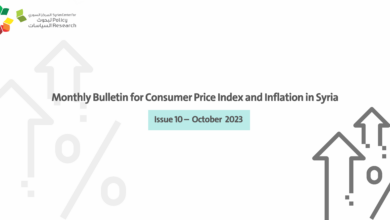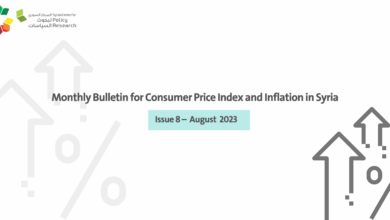Syrian Center for Policy Research:
The bulletin provides an independent assessment of consumer prices and the rate of inflation in all Syrian regions, based on a monthly survey of consumer prices carried out by the Syrian Center for Policy Research (SCPR) since October 2020. The SCPR had developed a methodology for building a price index based on components of consumer basket, weighting, and market selection (See SCPR’s Consumer Price Index in Syria)
This bulletin presents the findings of the monthly consumer price survey and the changes in the Consumer Price Index (CPI) for March 2023 (with 2021 as the base year) broken down by region and the major consumption groups. Based on the CPI changes, the bulletin provides an estimate of the cost of living and poverty lines at local level in all Syrian regions.
The following results are highlighted:
- In March 2023, the general price index reported annual inflation (Y-o-Y) at 80.1 per cent and monthly inflation (M-o-M) at 4.2 per cent. The Tobacco group registered the highest monthly inflation rate in March at 7.5 per cent.
- The governorates of Ar-Raqqa, Al-Hasakeh, Tartous, and Lattakia registered the highest monthly inflation levels, ranging between 6.4 per cent and 7.8 per cent.
- The Food & non-Alcoholic Beverages group made the most significant contribution to monthly inflation (M-o-M) for March 2023 prices (standing at 4.2 per cent) comprising 60.7 per cent of the total contribution. It was followed by the Housing, Water, Electricity, Gas, and other fuel oils group at 15.9 per cent, and then the Tobacco group at 7.2 per cent.
- The abject poverty line for families, serving as an indicator of food insecurity, rose to SYP 1.15 million per month in March 2023, marking an increase of SYP 48 thousand from February 2023. Meanwhile, the lower poverty line increased by SYP 75 thousand to reach 1.81 million, and the upper poverty line rose by SYP 103 thousand to reach 2.5 million.
- The wage gap from the upper poverty line reached 89 per cent for university-educated employees in the public sector, and 56 per cent for workers in the private and civil society sectors. These findings emphasize the distressing decline in wages, especially among public sector workers, contributing to an expanding rift between their earnings and the poverty lines.
To read the bulletin in English:
Monthly Bulletin – Issue (3), 2023 (En)
To read the bulletin in Arabic:
Monthly Bulletin – Issue (3), 2023 (Ar)
